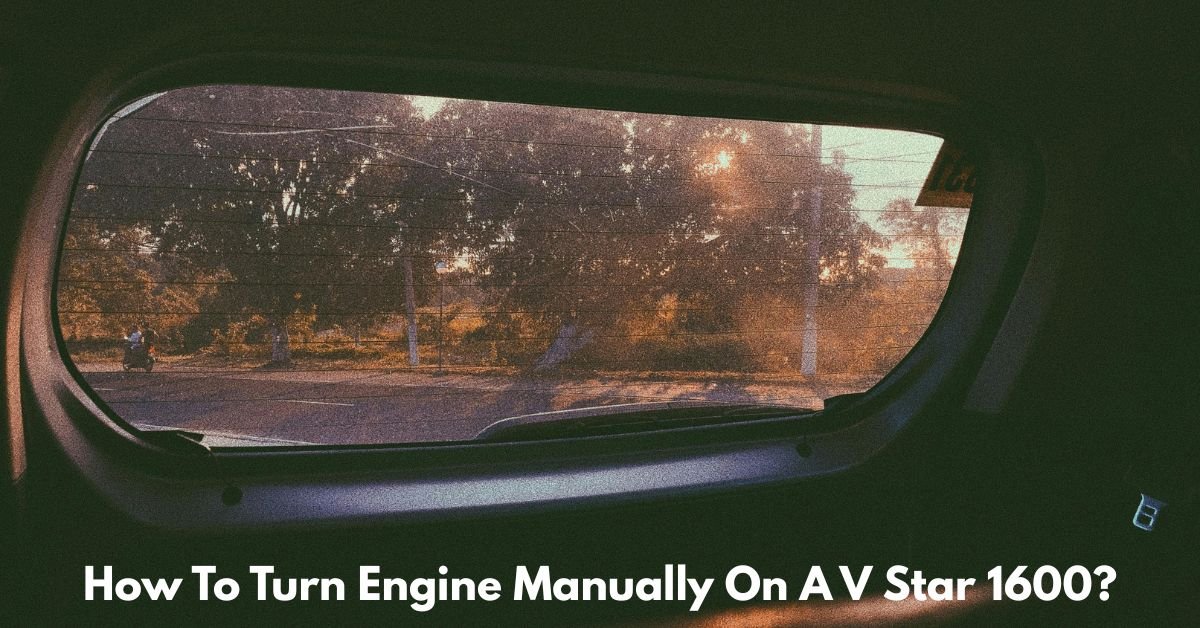Whether you’re diagnosing engine issues, performing a compression test, or just ensuring everything spins freely after a rebuild, manually turning the engine on your Yamaha V Star 1600 can be a vital part of motorcycle maintenance. While the V Star 1600 is a robust and reliable machine, knowing how to manually rotate its engine is a useful skill for any enthusiast or DIY mechanic.
In this post, we’ll walk you through the why, when, and how of manually turning over the engine, ensuring you do it safely and correctly.
How to Manually Turn the Engine on a Yamaha V Star 1600
Why Would Manual Engine Turning Be Necessary?
There are several reasons you might need to manually rotate the engine on your V Star 1600:
- Compression Test or Leak-Down Test: Before testing engine compression, it’s often useful to bring each piston to top dead center (TDC).
- Engine Timing Check: Manually rotating the engine helps you align timing marks if you’re checking valve timing.
- Pre-lubing or Checking for Hydro lock: After long periods of sitting or if there’s a suspicion of fluid entering the cylinder, turning the engine slowly helps avoid sudden damage.
- Engine Rebuild Verification: After rebuilding the engine or installing new components, a manual turn ensures everything moves freely before the first startup.
Tools You’ll Need
You’ll need a few simple tools to manually turn the engine over:
- Socket wrench set (metric)
- Large socket (usually 17mm or 19mm) for the crankshaft bolt
- Access to the crankshaft (via crankcase cover or flywheel bolt)
- Optional: spark plug socket (removing plugs reduces compression resistance)
Step-by-Step Guide to Manually Turn the Engine
Step 1: Ensure Safety First
Start by placing the motorcycle on a center stand or using a motorcycle jack to ensure it’s stable. Make sure the bike is in neutral and the ignition is off to prevent accidental starting.
Also, disconnect the battery if you’ll be working near any electrical parts, just to be safe.
Step 2: Remove the Spark Plugs
This step is optional but recommended. The engine turns considerably more easily when the spark plugs are removed because the compression resistance is reduced.
- Both plugs should be removed using a spark plug socket and extension.
- Label or remember which plug came from which cylinder.
Step 3: Locate the Crankshaft Access Bolt
On the Yamaha V Star 1600, the crankshaft bolt is usually located behind a small cover on the right side of the engine. This is typically near the flywheel or stator area. You may need to remove the chrome cover plate or engine case cover using a few bolts.
- Once the cover is removed, locate the crankshaft bolt—usually a large hex bolt.
Must Read: How To Clean Oil Off Engine?

Step 4: Rotate the Engine
A ratchet or breaker bar should be attached to the crankshaft bolt along with the proper socket. To flip the engine over, spin it slowly in a clockwise direction (never counterclockwise).
You should feel the engine smoothly rotate through its cycle. If you feel any binding or resistance (beyond normal compression), stop immediately and investigate.
- One full rotation of the crankshaft equals one complete engine cycle.
- Watch for the movement of the rocker arms or valve lifters if the covers are removed.
Step 5: Observe and Diagnose (if needed)
While turning the engine, this is a great opportunity to:
- Check valve clearance if needed.
- Watch the timing marks to see when each piston reaches TDC.
- Listen for any unusual sounds like scraping or clicking.
If you’re doing a compression or leak-down test, use this motion to set each cylinder to the correct position.
Step 6: Reassemble
Once you’re done, reinstall the spark plugs, torque them to spec, and reattach any covers you removed. Reconnect the battery if you had it disconnected.
Always double-check everything before attempting to start the engine.
Final Thoughts
Turning the engine manually on your Yamaha V Star 1600 is not difficult, but it requires care and attention to detail. Whether you’re troubleshooting an issue or preparing for more in-depth maintenance, taking this slow, methodical approach can prevent costly mistakes and give you deeper insight into your engine’s health.
Remember, always refer to your V Star’s service manual for torque specs, detailed diagrams, and safety recommendations. With a little patience and the right tools, you can confidently keep your ride in top condition.
